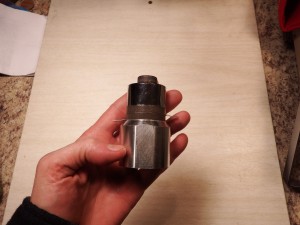
I bought a 50-watt Langevin-style transducer from eBay, which should be plenty for this application.
To make the tuned horn we need to determine the transducer's resonant frequency. There are two ways to do this: the easy way, and the lazy way.
Note: I am retracing the steps from Lindsay Robert Wilson's excellent website where he builds essentially the same device. If you don't understand something here, check out his site for a counterpoint description.
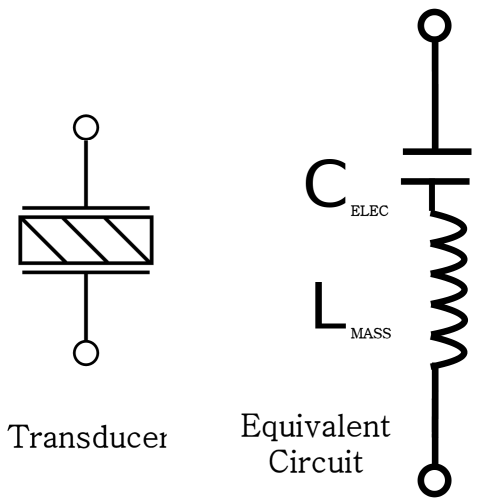
A piezoelectric transducer appears as a series-resonant L-C circuit. The electrodes on either side of the piezo plate form a capacitor, and the resonating mass acts as an inductance.
(It's actually a bit more complicated than this, but this is a good approximation.)
Driving the transducer at its resonant frequency achieves maximum power transfer from the transducer into whatever we're sonicating, so we need to determine what that frequency is. This will be useful when we design the power supply driver, and also when making and tuning the horn. More on those subjects later.
Measuring resonant frequency, the easy way
Current through the transducer is dependent on the impedance, which in turn is dependent on frequency. If we put a sense resistor in series with the transducer, the voltage drop will indicate the amount of current through the transducer.
At resonance, the impedance of the transducer is minimum and maximum current will flow. This same current causes a voltage drop in the sense resistor, and the maximum current (at resonance) will show the maximum voltage.
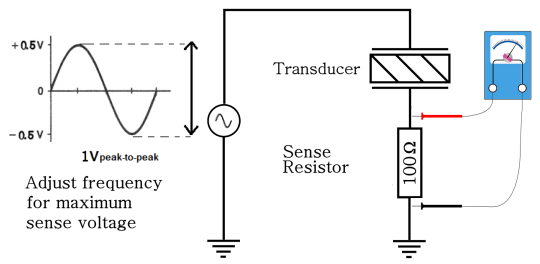
So to find the resonant frequency:
- Mount the horn so that it is not mechanically linked to anything (ie - hang it by rubber bands).
- Set up the circuit as shown.
- Set the signal generator for 1V p-p output.
- Adjust the frequency for maximum voltage.
- The frequency at which maximum voltage is seen is the resonant frequency.
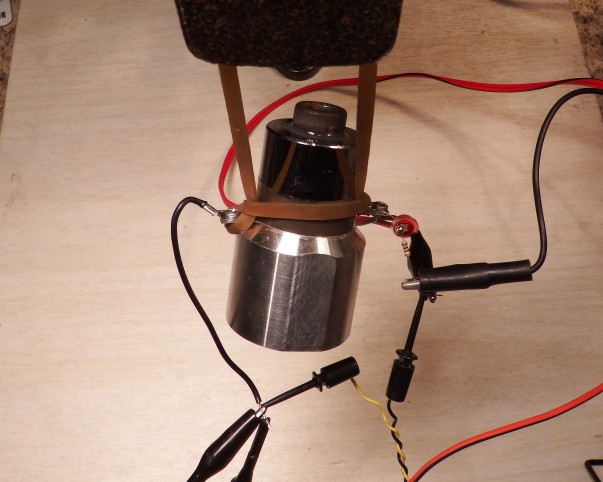 Here's my transducer hanging on a rubber band, connected to the electronics stack. |
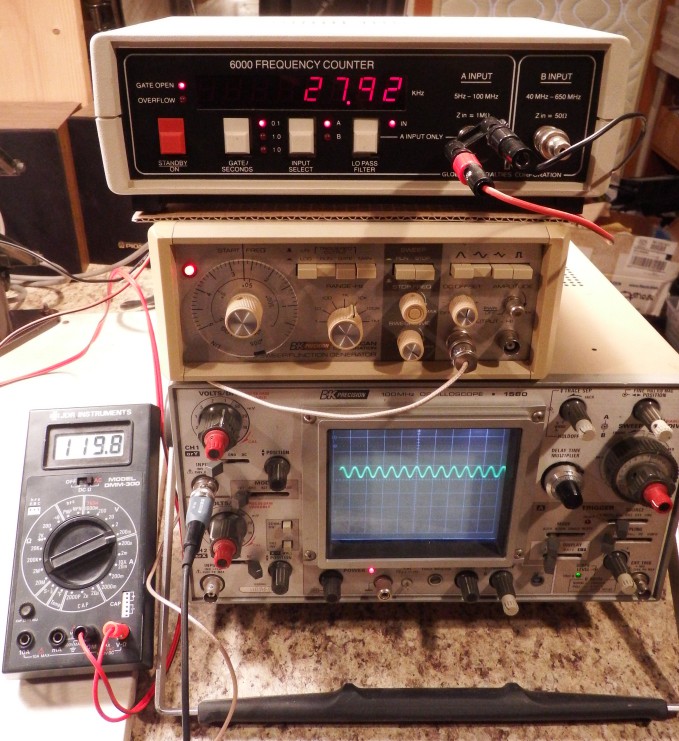
And I get: 27,920 Hz.
You can use a multimeter (AC scale) or a scope to measure voltage, and a frequency counter or a scope to measure frequency. I'm using both methods to better show what's going on.
According to the transducer documentaiton, the resonant frequency should be 28,000 Hz, plus-or-minus 1 KHz.
So my transducer is definitely within spec, and I now have the information I need to create a tuned horn attachment.
 Peter Walsh
Peter Walsh
Discussions
Become a Hackaday.io Member
Create an account to leave a comment. Already have an account? Log In.
With this circuit, only the resonance frequency can be obtained, how is the anti-resonance frequency obtained?
Are you sure? yes | no